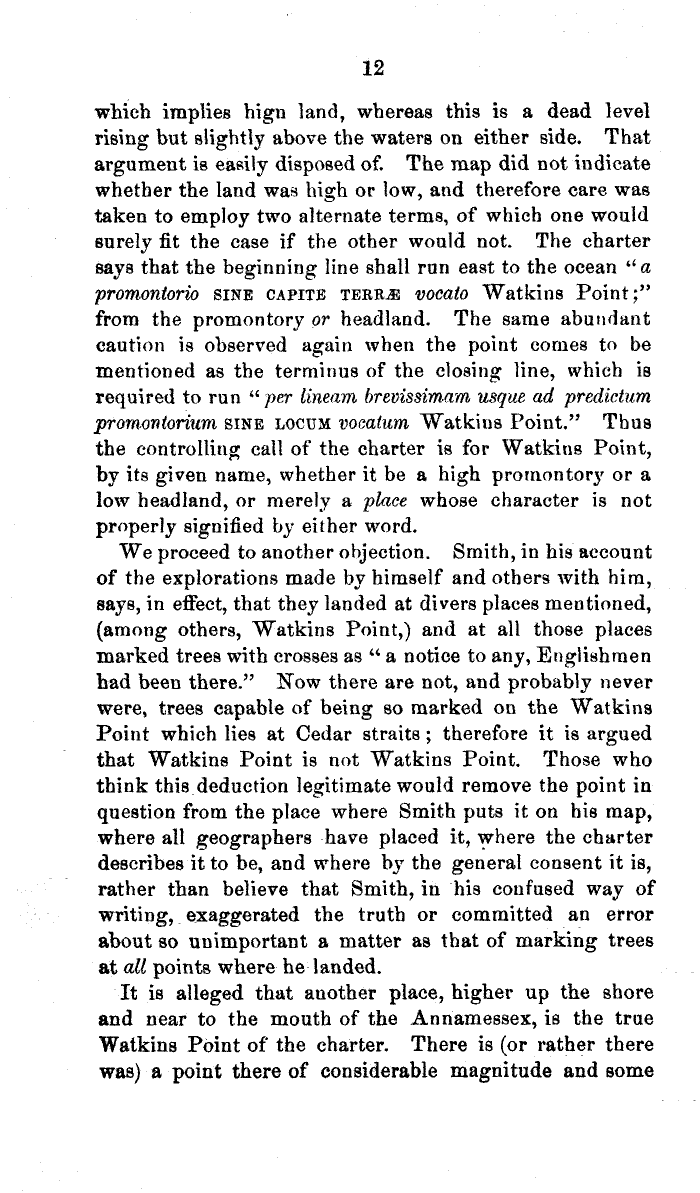| 12
which implies hign land, whereas this is a dead level
rising but slightly above the waters on either side. That
argument is easily disposed of. The map did not indicate
whether the land was high or low, and therefore care was
taken to employ two alternate terms, of which one would
surely fit the case if the other would not. The charter
says that the beginning line shall run east to the ocean " a
promontorio SINE CAPITE TERRA vocato Watkins Point;"
from the promontory or headland. The same abundant
caution is observed again when the point comes to be
mentioned as the terminus of the closing line, which is
required to run 11 per lineam brevissim.am usque ad predictum
promontorium SINE LOCUM vocatum Watkins Point." Thus
the controlling call of the charter is for Watkins Point,
by its given name, whether it be a high promontory or a
low headland, or merely a place whose character is not
properly signified by either word.
We proceed to another objection. Smith, in his account
of the explorations made by himself and others with him,
says, in effect, that they landed at divers places mentioned,
(among others, Watkins Point,) and at all those places
marked trees with crosses as 11 a notice to any, Englishmen
bad been there." Now there are not, and probably never
were, trees capable of being so marked on the Watkins
Point which lies at Cedar straits ; therefore it is argued
that Watkins Point is not Watkins Point. Those who
think this deduction legitimate would remove the point in
question from the place where Smith puts it on his map,
where all geographers -have placed it, where the charter
describes it to be, and where by the general consent it is,
rather than believe that Smith, in -his confused way of
writing, exaggerated the truth or committed an error
about so unimportant a matter as that of marking trees
at all points where he landed.
It is alleged that another place, higher up the shore
and near to the mouth of the Annamessex, is the true
Watkins Point of the charter. There is (or rather there
was) a point there of considerable magnitude and some
|

